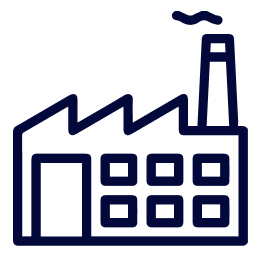Understanding Climate Technology

With awareness about the global warming crisis mounting, consumers are openly searching for alternative solutions to help reduce their carbon footprints. It’s well known that the environment has been severely affected by the overuse of heating and cooling equipment but what wasn’t known was what to do about it.
Thankfully innovative companies are stepping up to the plate to introduce climate technology, a dynamic solution to today’s global warming challenges. Climate tech offers us what we could only hope for in the past. A solid compromise between personal indoor comfort and a conscious choice to ease the burden on the planet to support that comfort.
With climate technology, we can have our AC and help the environment too. Read on for an understanding of climate technology and the differences between climate tech and clean tech as well as the current and future state of climate technology.
What is Climate Tech?
Climate technology, or climate tech, describes technology specifically created to protect the environment. More specifically, these technological advancements address the need to reduce the environmental impact of greenhouse gas (GHG) emissions and the resulting global warming that has ensued. Within this broad spectrum of technologies is a variety of tech solutions that fall into different categories. To better understand and segment climate technology solutions, it's helpful to view them in three main sectors which include technology that:
- Aims to address the effects that climate change has had on the planet
- Focuses on reducing or eliminating greenhouse gas emissions
- Helps provide a broader understanding of climate change
Climate Tech’s Goals
Climate tech aims to provide practical solutions that can be applied in everyday life that aid in reducing and eliminating the factors causing climate change. Ultimately, the goal is to not only reduce carbon emissions but also to make the world more liveable, safer, and healthier for animals, plants, and the entire planet. The correlation between harmful carbon emissions and the climate is an undeniable one and an array of climate technology solutions have arisen in an attempt at mitigating the damage. Climate technology solutions address a variety of different areas including:
- Transport and mobility
- Food and Agriculture
- Land use
- Manufacturing and Industry trades
- Finance
- Construction and building
- GHG processing
- GHG Data, analytics, and reporting
With the advent of climate technologies in these various sectors, the push towards improving the climate is now a wholehearted effort across all industries and markets.
Climate Tech Vs. Clean Tech
Often the terms climate tech and clean tech are used interchangeably, however, the two terms are distinctly different and refer to two different concepts. Having already defined climate technology, it helps to understand what clean technology is.
Clean tech is aimed at creating renewable energy solutions. The concept of clean tech describes technology that is focused on reducing carbon emissions in daily life. The overarching aim of clean technologies is to improve how we go about completing day-to-day life from harnessing fossil fuels, to driving, to constructing new buildings.
In every area of life, there is an opportunity to mitigate the effects of GHG on the planet, ultimately improving the environment by using alternatives to the carbon-heavy options currently in place. Clean tech speaks directly to the need to eliminate and replace existing solutions in the areas of gas, mining, coal, manufacturing, and more.
The difference between both terms is that while climate tech speaks to the global challenges raised by greenhouse gas emissions, clean tech is focused on creating renewable energy solutions that create clean energy in daily life and business practices.
The Race To Net Zero
One of the benefits of developing climate technology applications is that they serve to bring us closer to achieving net zero. Before we can understand and explore the race to Net Zero, it helps to know what exactly Net Zero is.
What is Net Zero?
Net Zero describes reaching a point at which the amount of carbon emitted into the atmosphere is canceled out by the amount that is removed from the environment. To achieve net zero, it is imperative to start by reducing the quantity of GHG emissions that are released. This can be done by using climate technologies that reduce carbon emissions or remove CO2 from the air entirely.
The current annual GHG emissions are quoted at 59 gigatons with one gigaton equaling one billion tons. Getting to net Zero would address the global crises occurring and is the moment when as many GHG emissions as are released are also removed or captured and mitigated. When we have attained this long-desired balance, the planet will be a healthier place for all of us to inhabit.
The Race
The United Nations has initiated a campaign to engage all cities, regions, businesses, financial and educational institutions, and investors in achieving the goal of net zero emissions by the year 2050. This initiative has been termed the race to Net Zero and is one that climate technologies are assisting with making a genuine possibility.
The Impact of Covid
Although the initial response and protocols put in place in response to the COVID-19 pandemic have largely abated, its impact on the economy was largescale and long-lasting. With technology startups depending largely on funding for their inception and expansion, it has been challenging in the wake of the Covid-19 pandemic. The main effects of Covid on climate technology are that the length of time for funding to be provided is longer and the COVID-19’s impact on the stock market has affected funding evaluations.
The Role of Carbon
Carbon is produced in almost every area of our lives including food production, transport, manufacturing, and more. From the methane released by cows to the carbon emitted when driving, carbon emissions have been a part of modern-day life on earth for decades. However, if we are to improve the health of the environment and work towards the goal of achieving net zero, carbon emissions will need to be drastically reduced or mitigated.
This is where climate technology comes into play. The battle against carbon emissions is futile without the implementation of actual technological solutions that can either capture carbon emissions or optimize existing systems to reduce the production of carbon in the environment.
Climate Tech’s Current State
The capability of climate tech to mitigate some of the environmental imbalances stemming from an overabundance of greenhouse gas emissions has previously been restricted by a lack of funding. However, currently, investors are seeing the possibilities within the climate tech market.
Thankfully, this has meant that investing and funding have increased drastically in this arena. Climate tech saw a total investment of $87.7 billion in 2020-2021 which is the largest amount in the industry’s inception. Currently, climate technology makes up 14 cents out of every venture capital investment dollar.
This has allowed companies like Sensibo, a leader in climate technology, to bring practical and helpful solutions to market for optimizing indoor comfort while protecting the planet. Sensibo’s smart approach to climate control brings modern-day convenience and efficiency combined with futuristic modulation of the everyday home climate.
With a focus on limiting the environmental impact of AC overuse, Sensibo allows for greater control over your AC using your smartphone, setting temperatures and timers remotely, and enhancing indoor air quality.
The Future of Climate Tech
With so much recent growth in the climate tech sector, the future is looking bright for expansion in this arena. The climate tech market offers a significant return on investment and investors are taking note. As a quickly maturing business asset, it’s not only about helping the planet but also offering a business opportunity that financial leaders simply don’t want to miss out on.
The inherent commercial opportunity in climate tech helps to fuel interest and investment dollars into this rapidly growing market. The end result is more impact-driven technologies being created that focus on reducing greenhouse gas emissions which makes the planet a healthier place for everyone.

















.png?width=300&height=248&name=how-hotels-can-embrace-sustainability-and-cut-operational-expenses%20(1).png)

















